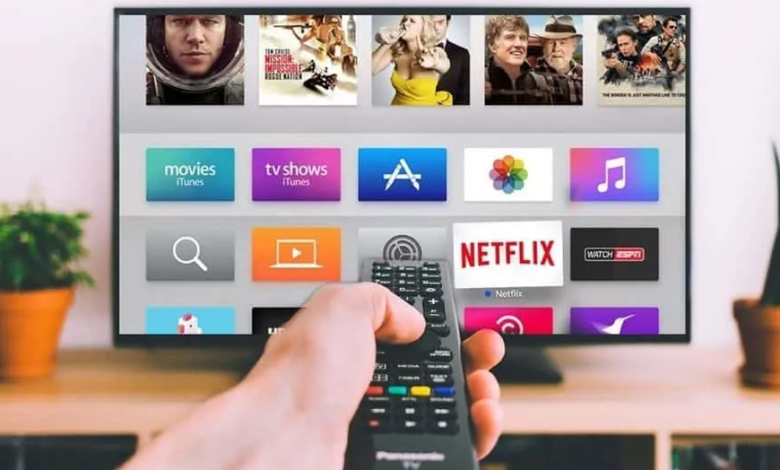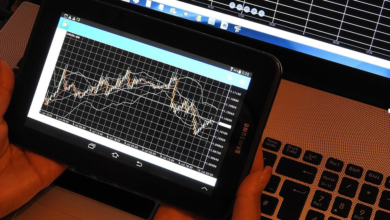OLV Advertising: Reaching Audiences Through Online Video

The digital era has transformed how brands connect with consumers, and online video (OLV) advertising has emerged as a dominant force in this shift. With platforms like YouTube, TikTok, and streaming services capturing billions of hours of viewer attention, OLV offers unparalleled opportunities to engage audiences through dynamic, visually compelling content. Unlike traditional advertising, OLV combines the emotional impact of video with digital’s precision targeting and analytics, making it a powerful tool for reaching diverse audiences. This article delves into the mechanics of OLV advertising, its strategic advantages, and how businesses can leverage it to achieve measurable results in today’s fragmented media landscape.
The Rise of Online Video Consumption
The growth of online video consumption has been nothing short of explosive. Consumers now spend hours daily watching videos on smartphones, tablets, and smart TVs, drawn to everything from short-form content on social platforms to long-form series on streaming services. This shift has reshaped advertising, as brands pivot to meet audiences where they are. For instance, a young professional might scroll through Instagram Reels during a commute, while a family streams a movie on Netflix in the evening. OLV advertising capitalizes on these diverse viewing habits, offering formats like pre-roll ads, in-stream ads, and sponsored content to capture attention.
The appeal of OLV lies in its versatility. Short-form platforms like TikTok cater to quick, engaging content that resonates with younger audiences, while platforms like YouTube support in-depth storytelling for brands with complex messages. Streaming services, such as Hulu or Disney+, provide a premium environment for ads, often during uninterrupted viewing sessions. This variety allows marketers to tailor campaigns to specific audience segments, ensuring relevance and impact.
Crafting Compelling Video Content
Effective OLV advertising hinges on creative that captivates and resonates. Unlike static ads, video offers a multisensory experience, blending visuals, sound, and motion to tell stories that stick. However, the digital landscape demands brevity and immediacy—viewers often decide within seconds whether to engage or skip.
To succeed, OLV creative must be concise and audience-centric. The first few seconds are critical, especially for skippable ads like YouTube’s TrueView. A fitness brand, for example, might open with a striking visual of an athlete mid-workout to hook viewers instantly. Clear messaging is equally important. Ads should highlight key benefits—whether it’s a product’s unique feature or a limited-time offer—and include a strong call-to-action, such as “Shop Now” or “Learn More.”
Storytelling remains a cornerstone of impactful video ads. A travel company might craft a 15-second ad showing a family’s joyful vacation, evoking emotions that align with its brand. Authenticity also matters, particularly on platforms like TikTok, where users favor raw, relatable content over polished productions. Testing multiple creative variations—different lengths, tones, or formats—helps identify what drives engagement and conversions.
See also: What are the best techniques for supplier performance monitoring?
Targeting Precision in OLV Campaigns
One of OLV’s greatest strengths is its ability to deliver ads to highly specific audiences. Digital platforms offer robust targeting options based on demographics, interests, behaviors, and even real-time context. For instance, a luxury car brand can target affluent viewers interested in automotive content on YouTube, while a pet food company might focus on pet owners watching animal-related videos on Instagram.
Contextual targeting enhances relevance further. Platforms can serve ads based on the content being viewed, such as placing a sports drink ad during a live-streamed soccer match. Retargeting is another powerful tactic, allowing brands to re-engage users who previously interacted with their website or app. A retailer, for example, might show a video ad to users who abandoned a shopping cart, reminding them of the products they viewed.
Advanced data analytics enable marketers to refine targeting over time. By analyzing metrics like view-through rates, click-through rates, and conversions, brands can identify high-performing audience segments and adjust campaigns accordingly. This data-driven approach ensures ad spend is allocated to the most impactful opportunities, maximizing return on investment.
Navigating Ad Formats and Platforms
OLV advertising offers a range of formats, each suited to different goals and platforms. Pre-roll ads, which play before a video, are ideal for capturing attention but must be compelling to avoid skips. Mid-roll ads, appearing during a video, work well in longer content like streaming shows, where viewers are already invested. In-feed ads, such as those on TikTok or Instagram, blend seamlessly with organic content, increasing engagement through a native feel.
Choosing the right platform is critical. YouTube, with its massive user base, is ideal for broad-reach campaigns and detailed storytelling. TikTok excels for viral, trend-driven content aimed at younger audiences. Streaming platforms like Roku or Peacock offer a premium environment with fewer ad interruptions, appealing to brands seeking a high-quality viewer experience. Each platform has unique strengths, and successful campaigns often span multiple platforms to maximize reach and impact.
Budget allocation should align with campaign objectives. For brand awareness, a broad campaign across YouTube and social platforms might prioritize impressions. For conversions, a targeted campaign on a streaming service with strong call-to-action ads could drive better results. Testing small budgets on new platforms can uncover untapped opportunities without significant risk.
Measuring Success and Optimizing Performance
OLV’s digital foundation allows for precise measurement, a key advantage over traditional TV advertising. Key performance indicators (KPIs) like impressions, view completion rates, and cost per view provide insights into reach and engagement. Conversion-focused metrics, such as click-through rates or return on ad spend (ROAS), reveal how effectively ads drive actions.
Attribution is critical for understanding impact. Multi-touch attribution models can track a viewer’s journey from watching an ad to making a purchase, even across devices. For example, a consumer might see a pre-roll ad on YouTube, research the product on Google, and later buy via a retargeted ad on Facebook. Connecting these touchpoints ensures marketers accurately assess OLV’s role in conversions.
Optimization is an ongoing process. A/B testing different ad creatives, targeting parameters, or placements helps refine campaigns. If a skincare brand notices higher engagement with 15-second ads versus 30-second ones, it can shift budgets accordingly. Similarly, pausing underperforming placements—like a streaming channel with low view-through rates—frees up resources for better opportunities.
Overcoming Challenges in OLV Advertising
Despite its strengths, OLV advertising faces challenges. Ad fatigue is a common issue, as viewers bombarded with repetitive ads may disengage. To combat this, brands should refresh creative regularly and cap ad frequency to avoid overexposure. Platform algorithms also evolve, impacting ad delivery and costs. Staying informed about updates, such as changes to YouTube’s ad ranking system, helps marketers adapt strategies proactively.
Privacy regulations, like GDPR or CCPA, limit data collection, affecting targeting capabilities. Brands can counter this by leveraging first-party data, such as email lists or website analytics, to build audience profiles. Consent-driven strategies, like offering discounts for opt-ins, maintain compliance while preserving targeting precision.
Competition for viewer attention is another hurdle. With countless brands vying for limited ad slots, standing out requires bold, memorable creative and strategic placement. Investing in high-quality production and aligning ads with trending content can improve visibility and engagement.
Integrating OLV with Broader Marketing Strategies
OLV is most effective when integrated with other marketing channels. A cohesive campaign might combine OLV with social media, email, or search ads to guide consumers through the funnel. For instance, a fashion brand could launch a YouTube pre-roll ad to build awareness, then retarget viewers with Instagram Stories ads to drive purchases. Consistent messaging across channels reinforces brand identity and increases conversions.
Cross-channel data sharing enhances performance. Insights from OLV campaigns, like which demographics respond best, can inform email personalization or search ad targeting. Conversely, search data can guide OLV creative, such as emphasizing keywords that drive high engagement. This synergy creates a seamless customer journey, amplifying overall impact.
The Future of OLV Advertising
As technology evolves, OLV advertising continues to innovate. Interactive video ads, which allow viewers to engage directly with content—like clicking to explore a product—offer new ways to drive engagement. Augmented reality (AR) ads, such as virtual try-ons for makeup or furniture, create immersive experiences that deepen connections. Artificial intelligence is also transforming OLV, enabling hyper-personalized ads and predictive analytics to optimize targeting.
Emerging platforms and formats will shape OLV’s future. The rise of connected TV (CTV) blends the premium feel of traditional TV with digital’s precision, offering new opportunities for advertisers. Short-form video continues to dominate, with platforms like TikTok driving trends that brands must adapt to. Staying agile and experimenting with new formats ensures marketers remain competitive.
Online video advertising is a dynamic, high-impact tool for reaching audiences in the digital age. By crafting compelling creative, leveraging precise targeting, and integrating with broader strategies, brands can engage viewers and drive measurable results. As consumption habits evolve and technology advances, OLV’s versatility and scalability make it a vital component of modern marketing, capable of connecting with audiences in ways that resonate and convert.




